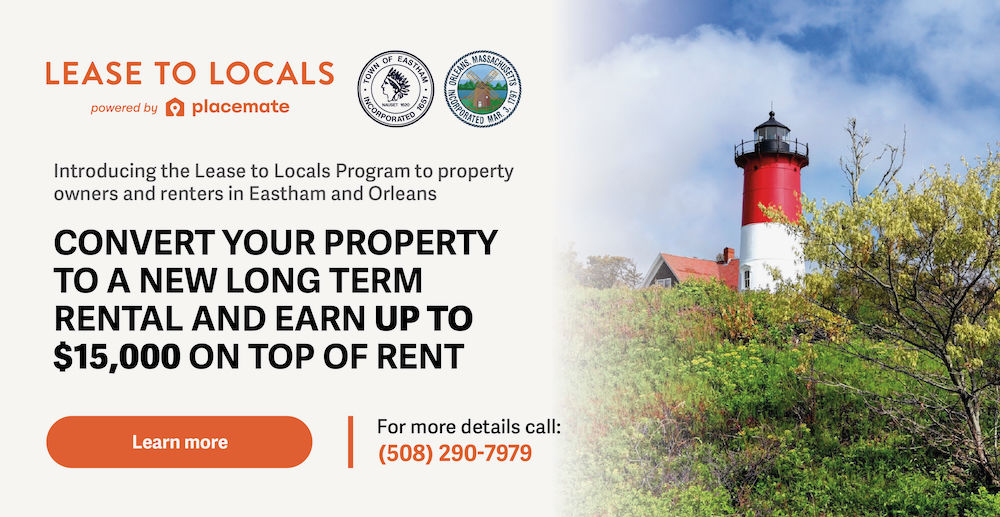In conversations about coastal resilience, we often hear about engineering, infrastructure, and timelines. We rarely hear about the relationships that everything else depends on — the ones between people, between places, and between humans and nature.
Adaptation doesn’t begin with infrastructure or plans. It begins with people, with understanding. It begins in uncertainty, in conversation between neighbors trying to make sense of what’s changing and what’s being asked of them.
Last July, a woman who lives on Commercial Street called me. She had heard from a neighbor that a nearby house that recently sold was about to be lifted. Though she hadn’t received a certified abutter notice herself (she lives just outside the historic district commission’s 75-foot notification radius), a neighbor had alerted her.
Abutter notifications inform neighbors about permit applications that may affect their property, providing them an opportunity to participate in the review process. Unfortunately, the historic district commission insists on going first in the regulatory review process, even though its notification radius is the smallest.
The plans in this case were vague. No clear elevation or drainage details were provided. Coming so soon after a major storm that flooded the East End, the plan alarmed the woman who called me.
I realized I knew the new owner. I called him and said, “There’s a firing squad waiting for you at the historic district commission. You need to pull that application and go to conservation first.” He agreed without hesitation.
I called the woman back and explained that the project wouldn’t move forward until there was more clarity, more engagement, and time for questions.
Preparing the submission for conservation took time, but it was necessary. That process requires detailed technical documentation. A dozen neighbors were already organizing in opposition. After the recent flooding and concerns about earlier lifting projects, people feared a repeat. They were still reeling from two major floods, one near Howland Street in 2022, widely blamed on the lifting of 509 Commercial, and another in the area of 605 Commercial in 2023, blamed on inadequate storm water management. When the application was filed with few details, neighbors feared the worst.
At the conservation hearing, we were able to clearly explain that the property lies in FEMA zone VE15, with a required design flood elevation of 17 feet. The house sits at just 7 feet, so a 10-foot lift was the minimum needed. A seawall and native plantings were added to the plan. With the facts on the table, the conservation commission approved the project unanimously.
As the historic district hearing approached, I suggested that the new owner invite his neighbors over. “Let them see you as a neighbor, not just an applicant,” I said. He asked if I would come. “You don’t need a consultant,” I told him. “You need connection. That’s what matters.”
By the time the project went before the commission, many of the same people who had planned to oppose it spoke in support.
I was paid for my work as a consultant. I’ve done this kind of permitting and policy coordination for over 30 years. Out of that experience, the Micro Neighborhood Alliance was born, not as a business, but as a nonprofit dedicated to helping residents understand complex regulations and find a path forward, grounded in presence and clarity. We practice what I call relational adaptation.
This approach recognizes that we are in a continuous exchange with the environment and with each other. As we shape it, it shapes us. When relationships are honored among neighbors, between people, policy, and place, adaptation is more possible.
In Provincetown, adaptation to climate change and sea-level rise is unfolding across four interconnected areas: coastal infrastructure, stormwater management, FEMA compliance, and emergency management.
The town’s new coastal resilience plan, described in last week’s issue of the Independent, addresses these areas with ambition and technical rigor. These are necessary steps, and they deserve support. But even the best-designed plan can fall short if it doesn’t meet people where they are.
We help people by offering clarity, easing anxiety, and strengthening our collective ability to adapt. FEMA’s requirements remain in force, even as the plan unfolds. And the water doesn’t know your address.
Common questions include how high a house lift will be and how many steps a building will require. At 73 Commercial St., for example, we plan to lift the structure to comply with FEMA and shift it back so the character-defining front door can remain functional without encroaching on the street. But these aren’t just technical decisions. They are quiet acts of care.
Resilience isn’t just about technical expertise; it is collaborative and collective. It begins with consistent presence, in context and in community. Adapting well is something we do together, beginning in relationship with each other and extending to the living systems of which we are all a part.
One of my teachers, Larry Ward, said the greatest act of generosity we can do is to give someone “non-fear.” That’s what the Micro Neighborhood Alliance tries to offer: not all the answers, but a path forward, and the presence of walking with people as they find their footing.
Ginny Binder of Provincetown is the founder of the Micro Neighborhood Alliance.



